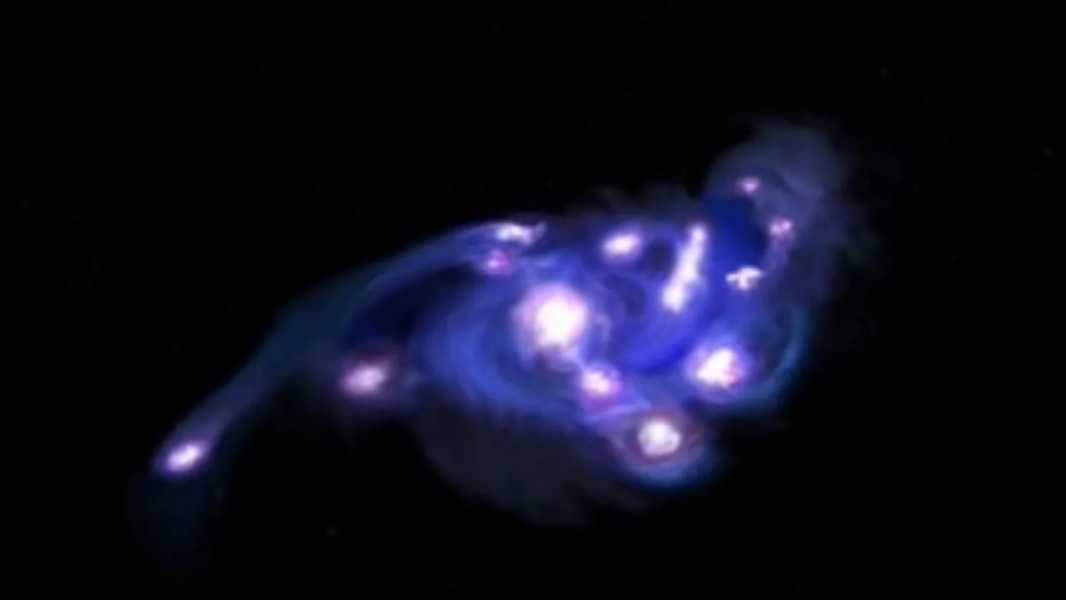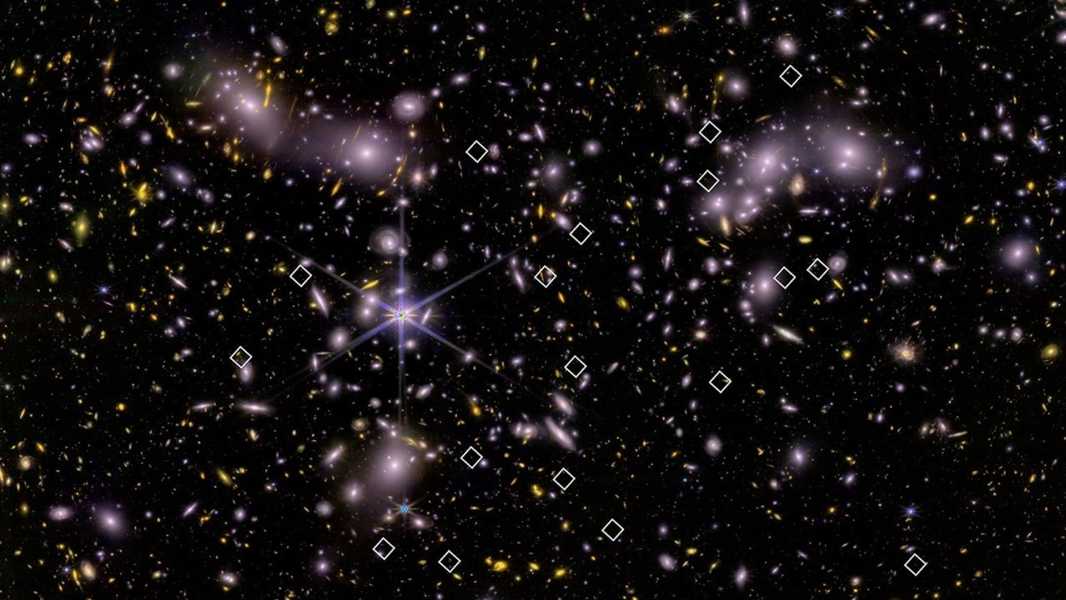
An artist's impression of the Cosmic Grape galaxy, which contains at least 15 large star-forming clusters. (Image credit: NSF/AUI/NSF NRAO/B.Saxton)
The distant galaxy is thought to contain more than a dozen tightly clustered star-forming clusters arranged like a bunch of grapes – far more than astronomers thought possible for a galaxy in the early universe.
The galaxy nicknamed the “Cosmic Grapes” is thought to have formed just 930 million years after the Big Bang. A new study has shown that the galaxy's rotating disk contains at least 15 massive star-forming clusters, forming what looks like a bunch of bright purple grapes in space.
Using the James Webb Space Telescope (JWST) and the Atacama Large Millimeter/submillimeter Array (ALMA), astronomers discovered the galaxy using a technique known as gravitational lensing, in which a foreground galaxy — in this case, an object known as RXCJ0600-2007 — serves as a magnifying glass for more distant objects.
You may like
-

James Webb Telescope Discovers Tiny Galaxies That Could Have Changed the Universe
Sourse: www.livescience.com





